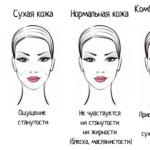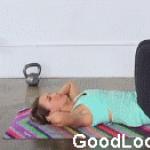In the previous lesson, we learned about ways to change the number of loops during the knitting process to make patterns and ornaments.
For execution complex knitting patterns use diagrams, you need to be able to understand them.
On diagrams with symbols depict pattern repeat. Rapport is a sequentially repeating element of a pattern, which includes a certain CP in width and CP in height and is written by a formula.
For example, entry KP/7+3+2 cr. means that 7 is a repeat of the pattern, which means that in the formula for calculating loops instead of KP/7, substitute any number divisible by 7 without a remainder, to this number add 3 (KP for pattern symmetry) and 2 (edge loops).
In the diagrams, the rapport is enclosed between thickened lines. Loops for symmetry can be placed before or after repeat loops. Edge loops are not shown in the diagrams.
The numbers under the lower horizontal line of the diagrams indicate the number of the loop of the 1st row. The absence of a loop number means that there is no loop on the knitting needle; it will appear during the knitting process, so a place for it in the diagram has been prepared in advance.
The numbers to the left and right of the diagrams indicate the row number. You should always knit from the row number. Knitting according to the pattern from right to left gives the front side of the work, from left to right - the back side. In multicolor patterns various colors threads are designated by letters: A. B, C, etc.
Patterns in which even rows are knitted with loops of the same type or “how the loops look,” i.e. Knit stitches are knitted above the knit stitches, and purl stitches are knitted above the purl stitches; in the diagrams they are presented only in odd rows.
The entry at the end of the pattern indicates which row to repeat the pattern from.
Abbreviations:
- n. - loop
- R. - row
- KP. - number of loops
- KR. - number of rows
- cr. - edge
- l. - facial
- from. - purl
- vsp. - auxiliary
- basic - main
- cx. - scheme
Example of possible symbols on diagrams
One knit and one purl stitch


1 l. p. crossed with the grip of the working thread from below. Insert the right knitting needle behind the back wall of the loop on the left knitting needle, grab the working thread from below and knit a loop. The knitted loop is placed on the knitting needle in such a way that its walls will cross when you further knit a front or back loop from it.

Slip 1 stitch from the left needle to the right, leaving the working thread behind the loop.

Slip 1 stitch from the left needle to the right, leaving the working thread in front of the loop.


Yarn over from yourself. Lack of loop in the diagram.

Throw the working thread onto the right needle, slip the loop from the left needle onto the right.

Knit two stitches together.

Knit three stitches together.

Knit two loops together as follows: remove 1 st from the left knitting needle to the right one using a knit stitch, knit the next loop, pick up the removed loop with the left knitting needle and throw it over the knitted loop.

Knit 3 sts together as follows: alternately remove 2 sts from the left knitting needle to the right one using a knit stitch, knit the next loop, pick up the removed 2 sts with the left knitting needle and throw them on the knitted loop.

Purl two stitches together.

Purl five stitches together.

Knit 3 sts together as follows: remove 2 sts at the same time with a knit stitch, knit the next stitch, pick up the removed loop with the left knitting needle, and place it on the knitted loop.

Knit the loop of the previous row, lower the unknitted loop from the left knitting needle.

Knit stitch from under the crossed broach.

“Bump” from 5 sts: knit 5 sts from one loop, alternating knit stitch with yarn over,
turn the knitting, knit these loops, turn the knitting, purl these loops,
turn the knitting, knit these stitches, turn the knitting, knit all 5 stitches with the knit stitch crossed.

“Bump” from 5 sts: knit 5 sts from one loop, alternating knit stitch with double crochet,
turn the knitting with the opposite side towards you and knit all 5 stitches together purlwise.
Return the knitting to its previous position and re-knit the knitted stitch onto the right knitting needle.

From one stitch, knit 5 stitches: knit a loop without letting it go from the left knitting needle, yarn over, knit again, yarn over and knit again.

A “bump” of 5 stitches is knitted for the number of rows that the figure in the diagram covers:
first knitted from one loop 5, alternating knit with yarn over,
then these loops are knitted in the corresponding row according to the symbol included in the figure,
Finally, all the loops are knitted together purlwise.

Slip 2 stitches from the left needle to the right, working yarn in front of the loops. Knit the next 2 sts. Insert the left knitting needle from behind under the working thread into the slipped loops, and remove the right knitting needle from 4 sts and pick up 2 knitted sts.
Knit 2 stitches on the left needle with knit or purl depending on the symbols located under the horizontal line.
Remove the CP located under the horizontal line from the left knitting needle to the right one, leaving the working thread in front of the loops.
Knit the next loops according to the symbols under the horizontal line. Insert the left knitting needle from behind under the working thread into the removed loops, and remove the right knitting needle from the knitted and slipped loops and pick up the knitted loops.

Knit the loops on the left needle according to the symbols above the horizontal line.
Remove 2 sts from the left needle to the right, working thread behind the loops, knit the next 2 sts.
Insert the left knitting needle from the front into the removed loops, and remove the right knitting needle from 4 sts and pick up the 2 knitted sts from behind.
Many people believe that knitting is less difficult than crocheting, and that the finished products look “simpler.” I fundamentally disagree with this belief.
You can use knitting needles to make many beautiful openwork and original patterns!
But in order for the product to turn out beautiful, first of all you need to understand the diagram and its symbols.
Basic symbols and their description
I think that even those who have never picked up knitting needles know very well that knitting in this way is based on two types of loops - knit and purl. Let's start with them.
Face loop
When knitting a purl loop, the thread should be in front of the work. In order to knit a purl loop, you need to insert the right knitting needle into the loop in the direction from right to left and wrap the thread around the knitting needle, as shown in the figure. This new turn needs to be pulled into a loop from the left knitting needle, and the resulting new loop must be transferred to the right knitting needle.
Widely used in knitting yarn overs.
Yarn over
In order to make a yarn over, before knitting the next loop in the front row, you need to throw the working thread on the right knitting needle - you get an additional loop. After this, in the purl row you need to knit the yarn over with a purl loop.
By arranging the resulting holes in a certain order, you can get a beautiful openwork pattern.
To get a hole bigger size, perform a double or triple yarn over. You need to perform yarn overs carefully, because... If you get it wrong just once, the drawing will be ruined.
In addition to the classic knit and purl stitches, there are also crossed knit and purl stitches. They were given this name because the walls of these loops are crossed at the base. In this regard, they are more complex than classical ones.
Crossed knit loop
In order to knit a crossed knit stitch, you need to insert the right knitting needle into the loop on the left knitting needle in the direction from right to left. Grab the working thread, pull it through the loop, and transfer it to the right needle.
Thus, the crossed front loop is performed in the same way as the classic one, but behind the back wall, and not behind the front.
Crossed purl stitch
In order to knit a crossed purl stitch, you need to insert the right needle into the loop on the left needle in the direction from right to left. In this case, the thread should be in front of the loop.
Next, you need to grab the thread, pull it through the loop, and transfer it to the right knitting needle.
By changing the usual sequence of stitches in a row, patterns with displaced stitches are obtained. Happening loop shift, creating a pattern design.
Conventionally, this is indicated as follows:
Shift knit stitches to the right
Shift knit stitches to the left
Shift purl stitches to the right
Shift purl stitches to the left
To cut in loop pattern, knit several loops together at once.
If you knit two loops together, the pattern will be reduced by one loop, if you knit three loops together, then by two, etc.
Two loops together, knitted to the right
In order to knit two stitches together with a knit stitch slanted to the right, you need to pass the right knitting needle through two loops on the left knitting needle in the direction from left to right, grab the working thread and knit a loop in the direction away from you. The result was a tilt to the right. Slip stitches off left needle.
Two loops together knitted with a slant to the left
In order to knit two stitches together with a knit stitch to the left, you need to remove the first of the two loops from the knitting needle, turn it over and return it to the left knitting needle. Insert the right needle into two loops from right to left, grab the working thread away from you, and pull the loop through. The tilt was to the left. Slip stitches off left needle.
Purl two stitches together and slant to the right
In order to knit two purl loops with a slant to the right, you need to remove two loops from the left knitting needle to the right one (the thread in this case should be in front of the work), swap places, insert the right knitting needle into these loops from left to right. Grab the working thread away from you and knit a loop. The tilt will be to the right.
Purl two stitches together and slant to the left
In order to close the loops in this way, you need to knit the edge (first in the row) loop at the beginning of the front row and the next one behind it, together with the front one behind the back walls. Thus, one loop should form on the right needle.
You need to transfer it to the left knitting needle, knit it together with the next loop, and so on until all the loops of the last row are closed.
To secure, pull the end of the cut thread through the last loop.
So, these are the basic, basic designations and their description when knitting.
Many magazines use their own legends, which are usually placed either at the beginning or at the end of the magazine.
The most common designations in magazines
Conventions in Japaneseknitting patterns
Probably every knitter has found herself in such a situation that she found a wonderful pattern, but it had Japanese symbols.
This is not surprising, because most often Japanese magazines are famous for their good models and detailed diagrams. And it’s a shame not to use these wonderful models just because you couldn’t understand the description.
First in Japanese magazines it is given yarn description.
This symbol means yarn. In Japan, the most common skeins of yarn are 25 or 40 g.
This table shows the exact sizes of Japanese knitting needles that you need to focus on when choosing suitable knitting needles.
Then indicated knitting density.
A favorite activity always distracts you from everyday problems. Very often this activity is knitting. This type of needlework is a creative process that produces very beautiful things. Knitting has a generally accepted designation for loops, however, there are some clarifications. To read diagrams, you need to know the basic options for graphical representation of loops.
Purpose of the scheme
To knit any pattern, you need its diagram. It can be borrowed from experienced knitters who share secrets on special sites and forums. There are also tips and recommendations there. To create a pattern with your own hands, you need to understand the designation of loops.
Even with sufficient experience and good imagination, it is not always possible to reproduce a certain pattern without the use of diagrams. It happens that having made a mistake, you have to unravel the product. For this reason, needlewomen prefer to use patterns when knitting.
Crochet
Knowing the designation of crochet stitches for beginners will help you quickly read patterns. The following types of loops exist:
- Air.
- Half column.
- Single crochet.
- Half double crochet.
- Unfinished double crochet.
 The standard designation of an air loop is in the form of an oval or circle, unfilled inside. Sometimes it is depicted as a black, bold dot. The chain of air loops is a series of ovals. In some complex designs it looks like an arch. The number of loops is indicated by the number in the center.
The standard designation of an air loop is in the form of an oval or circle, unfilled inside. Sometimes it is depicted as a black, bold dot. The chain of air loops is a series of ovals. In some complex designs it looks like an arch. The number of loops is indicated by the number in the center.
A half-column is needed to connect parts or finish rows. Sometimes it is called connective or deaf. A half-column is depicted as a dot or a semicircle. It can also be a horizontal stroke or an inverted triangle or a “+” sign.
Single crochet is used to create a complex pattern or fabric. It is designated as a vertical bar, a "+" or an "x". It depends on the method of picking up the thread: through the front or back edge of the loop.
A half double crochet is performed like a double crochet, with three loops on the hook being knitted at the same time. In the diagram it is designated “T” or in the form of a vertical line. A column can contain several yarn overs, and its height depends on this. In the diagrams it is indicated by oblique strokes.
Unfinished double crochets are needed to knit complex patterns and decrease stitches. They are clearly marked with several double crochets connected at the top.
Crochet patterns for beginners with descriptions are very relevant. Conventions and their interpretation in knitting are easier to perceive if they are carried out in practice. It is advisable to start with simpler options.
Using knitting needles
Knitting is impossible without three basic loops:
- Facial.
- Purl.
- Yarn over
 The front loop is simple in execution; it can be crossed, lowered or extended. Thanks to it, many different patterns are obtained, both simple and complex.
The front loop is simple in execution; it can be crossed, lowered or extended. Thanks to it, many different patterns are obtained, both simple and complex.
Usually when knitting loop designation The diagrams are the same everywhere, but there are some nuances.
To master a new drawing, you should first perform it on a small sample. This will help you determine how many stitches you will need and gain skill in making the pattern. The designation of loops in diagrams is a vertical dash or an empty cell.
The purl loop is no less in demand when knitting; it looks like a horizontal dash in the diagrams. Using it, you can create the inside of the product, as well as highlight some fragments of the design.
Without facial and purl stitches the knitting process is impossible. Thanks to their different combinations, many variants of patterns are obtained.
A yarn over is a thread thrown over a knitting needle and is needed to knit a loop from it. It is used to create some patterns, and is also necessary when performing complex knitting, when the product needs to be narrowed or expanded. Yarn over is used to create an airy and loose surface on some patterns, as it appears where there was no loop before. If the threads and knitting needles are chosen correctly, original products can be obtained. The yarn over is indicated in the form of a circle.
 To create certain options, you can use additional knitting needles, a crochet hook and a pin. These items will prevent you from losing stitches that will need to be knitted later.
To create certain options, you can use additional knitting needles, a crochet hook and a pin. These items will prevent you from losing stitches that will need to be knitted later.
Designation of loops with three dashes, connected at the top, implies that they need to be knitted in a certain way.
Each loop is important in its own way, so the symbols of the loops in knitting in the diagrams and their interpretation are of great importance. In order for the drawing to turn out, you must strictly follow the diagram.
Attention, TODAY only!
The diagram shows how to knit the pattern. Basically, each cell corresponds to one loop, and each row of cells contains a number of loops. The patterns should be read in the front rows from right to left, in the back rows - from left to right.
Thus, the alternation of cells in the diagram corresponds to the alternation of loops when knitting. The numbers on the sides of the pattern indicate the number of rows from bottom to top, that is, the sequence in which you need to knit. On the right are the numbers for the front rows: on the left - for the purl rows. In the diagrams of most patterns, only the front rows are shown (most often odd). In these cases, in the purl rows the loops are knitted according to the pattern, that is: purl loops - purl, knit stitches - knit. If there are exceptions to this rule or any features, then this is usually indicated directly next to the pattern. If the purl rows are reflected in the diagram, then the loops are knitted as indicated.
How to knit a particular loop is explained with icons, the decoding of which is given in a general list. All icons are selected to resemble the loop itself as much as possible. They are remembered relatively quickly by looking at them. You can already imagine from the diagram what the pattern will be like. There is no need to be afraid, and then the schemes will very soon “speak” to you!
IN rapport(MS) reflects the number of stitches in width that you will need to create the pattern. This pattern is repeated so many times. how much is needed to obtain the desired width of the product. Rapport is marked on the diagrams with arrows or square brackets. Start knitting with loops until repeat, then repeat repeat loops as many times as possible. as needed to achieve the desired width of the product, and finish with loops after repeating.
If there is a central pattern, then only the required number of stitches for this pattern is given, and the main pattern running on both sides of it is knitted in accordance with the description or your own idea. The diagram shows the height of the number of rows required to form the pattern. The given rows should be repeated all the time. Exceptions to this rule are indicated directly next to each diagram.
Let's look at an example. Let's say we have the following diagram:
The numbers on the right side indicate that there are 12 rows in the repeat. If even rows are not indicated, then they are knitted the way the stitches look, that is: purl stitches are knitted over the knit stitches, knit stitches are knitted over the knit stitches, and purl stitches are knitted over the yarn overs.
The numbers below indicate how many loops you need to cast on. One repeat (repeating pattern) is marked with the symbols "MS".
So, in our case, we need to cast on 16 loops of the main pattern + 2 outer or edge loops (they are cast on with each knitting, as indicated in the table, they are most often not indicated in the patterns).
1st and 5th rows: * 1 purl. p., 2 p. together with the front one tilted to the right, 1 yarn over, 1 p. p., 4 p. cross to the left (leave 2 p. on the auxiliary needle before work, knit 2 p., then knit 2 p. on the auxiliary needle), purl 1. p., 2 p. together with the front one tilted to the right, 1 yarn over, 1 p. p., 4 persons. n. *, repeat from * to *;
2nd and all even rows: Knit all the loops according to the pattern, knit the yarn overs purlwise;
3rd row: * 1 purl. p., 1 yarn over, 2 p. knit together with a slant to the left, purl 1. p., 4 p. cross to the left (leave 2 p. on the auxiliary needle before work, knit 2 p., then knit 2 p. on the auxiliary needle), purl 1. p., 1 yarn over, 2 p. knit together with a slant to the left, purl 1. p., 4 persons. n. *, repeat from * to *;
7th and 11th rows: * 1 purl. p., 1 yarn over, 2 p. knit together with a slant to the left, purl 1. p., 4 persons. p., 1 p. p., 1 yarn over, 2 p. knit together with a slant to the left, purl 1. p., 4 p. cross to the right (leave 2 p. on the auxiliary needle while working, knit 2 p., then knit 2 p. with the auxiliary needle) *, repeat from * to *:;
9th row: * 1 purl. p., 2 p. together with the front one tilted to the right, 1 yarn over, 1 p. p., 4 persons. p., 1 p. p., 2 p. together with the front one tilted to the right, 1 yarn over, 1 p. p., 4 p. cross to the right (leave 2 p. on the auxiliary needle while working, knit 2 p., then knit 2 p. with the auxiliary needle) *, repeat from * to *.
Unfortunately, there are many variations in the design of loops for circuits. Almost every magazine has its own system of images of loops. It is usually found in a separate lookup table.
On our website we tried to use the most common method of depicting loops.
|
To see how to knit these symbols, follow this link: "click here" |
|
front loop |
|
| purl loop |
|
remove the loop, thread behind the knitting |
|
remove the loop, thread before knitting |
|
yarn over for openwork knitting |
|
yarn over for tight knitting |
|
front from broach |
|
purl from broach |
|
edge loop |
|
knit stitch, double crochet |
|
purl loop, double crochet |
|
2 loops together knit to the right (behind the front walls from left to right) |
|
2 loops together knit to the left (behind the back stacks from right to left) |
|
2 loops together purl to the right |
|
2 stitches together purl to the left |
|
remove yarn over, thread at work |
|
specified number of yarn overs for openwork knitting |
|
specified number of yarn overs for tight knitting |
|
facial crossed |
|
purl crossed |
|
from 1 loop we knit 3 (knit one and, without removing the loop from the left knitting needle, yarn over the right knitting needle and knit it again) |
|
3 stitches together |
|
the specified number of stitches together knit |
|
Purl 3 stitches together |
|
the specified number of loops together purl |
|
from 3 loops we knit 3 loops (3 knit loops and, without removing the loops from the left knitting needle, yarn over the right knitting needle and knit the knit one again) |
|
Yarn over, knit 2, yarn over over knitted loops |
|
1 yarn over, 1 purl |
|
Remove 3 sts as purl, while discarding yarn overs and pulling out long loops. Transfer the loops to the left needle again and knit the stitches together. cross, but do not lower the loops from the knitting needle; Knit 1 yarn over and loops together again. cross. Then drop the loop from the needle |
|
Cross 4 loops to the right (leave 2 loops on the auxiliary needle while working, knit 2, then knit 2 knits from the auxiliary needle) |
|
Cross 4 loops to the left (leave 2 loops on the auxiliary needle before work, knit 2, then knit 2 knit stitches from the auxiliary needle) |
|
the indicated number (here 6: 3 by 3) knit stitches to the right |
|
the indicated number (here 6: 3 by 3) cross stitches to the left with knit stitches |
|
Cross 4 loops to the right (leave 2 loops on the auxiliary needle while working, purl 2, then purl 2 from the auxiliary needle) |
|
Cross 4 loops to the right (leave 2 loops on the auxiliary needle before work, purl 2, then purl 2 from the auxiliary needle) |
|
the indicated number (here 6: 3 by 3) cross stitches to the right with purl |
|
the indicated number (here 6: 3 by 3) cross stitches to the left, purl |
|
Knit 2, place the second stitch on the first |
|
Purl 2, place the second loop on the first |
|
Cross 7 loops to the left - leave 3 loops on the 1st auxiliary needle before work, leave 1 loop on the 2nd auxiliary needle while working, 3 knit loops, then purl 1 loop from the 2nd auxiliary needle and knit 3 loops with 1st auxiliary needle. |
|
Cross 7 loops to the right - leave 3 loops on the 1st auxiliary needle while working, leave 1 loop on the 2nd auxiliary needle while working, k3. loops, then purl 1 loop from the 2nd auxiliary needle and knit 3 loops from the 1st auxiliary needle. |
For symbols of loops in knitting patterns, special symbols are used. Each symbol shows a schematic diagram of the loop as it appears on the front side of the work. For example, a vertical stroke indicates a knit stitch, and a horizontal stroke is used to indicate a purl loop. Those who use Chinese or Japanese magazines for knitting need to know such symbols.
In diagrams with symbols, each square corresponds to 1 loop, and each line corresponds to 1 row. The rows are read from bottom to top. Usually odd rows are numbered to the right of the diagram; if there are no special instructions, then these are facial rows, and they are read horizontally from right to left. The numbers on the left side of the diagram indicate purl rows, which are read from left to right. When knitting with circular needles in the round, all rows are read from right to left.
Sometimes the diagram shows only 1 repeating fragment of the pattern (rapport); in diagrams for complex patterns, more than 1 repeat is indicated so that you can imagine what the finished motif will look like. Rapport is indicated by a thick line that runs through the entire diagram. This line is the equivalent of the asterisk (*) or square brackets used in pattern descriptions.
The concept of rapport
The pattern can be written in text and in the form of a diagram.
A patterned fabric design usually consists of repeating elements. The part of the pattern that repeats is called rapport, or the rhythm of the pattern, and is designated *-* in the text.
In order not to clutter up the recording, not all loops along the width of the repeat are included in asterisks, but only this repeating part. The loops located before the star are made for symmetry at the beginning of the row, and those located after the stars are made at the end of the row. A certain combination of loops can be repeated several times within a repeat.
In addition to the text entry, the pattern can be read using a diagram. It is read from bottom to top. All odd rows (1, 3, 5, 7th, etc.) indicate the front side of the work and are read from right to left, all even rows (2, 4, 6, 8th, etc.) indicate the wrong side and are read from left to right.
In exceptional cases, it is usually indicated which rows are the right side of the knitting. Having finished knitting the last row (rapport height), continue to knit, reading the pattern from the 1st row, or from the row indicated at the end of the record. The width of one repeat is limited in the diagram by small vertical lines.
If we repeat the pattern twice for a sample, then we multiply the width of one repeat by 2. You should know that for the same pattern with vertical reliefs, the formula for determining the number of loops to start knitting is not always the same. If, when knitting one part of a product, loops are added at the end of a row for the symmetry of the pattern, then when casting on loops for another part of the same product, loops are not added so that when sewing the part, the overall appearance of the pattern is not disrupted.
When knitting headdresses on two knitting needles, the first and last loops of the row should be the width of one repeat, therefore, loops are not added at the end of the row for the symmetry of the pattern.
When knitting scarves, the first and last loops of the row (edges of the scarf) should be the same, which means that loops are added at the end of the row for symmetry of the pattern.
The phrase “how the loops look” means that over the loops of the bottom row, which look like knit stitches from the knitted side, knit loops are knitted, and over the loops that look like purl loops, purl loops are knitted, that is, in the knitted row we repeat the pattern of the knitted fabric of the previous row .





